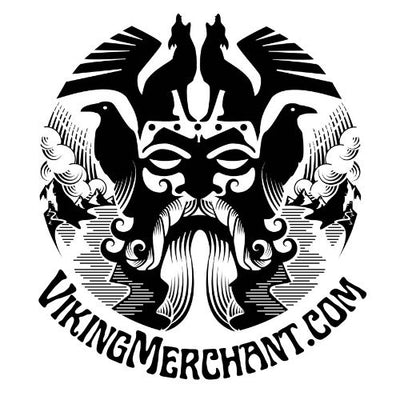The Tresses of Norse Warriors
Posted by Amber Lee on
When one imagines a Viking, the image that often comes to mind is a rugged warrior brandishing an axe or sword, with a horned helmet (a misconception, by the way!) and flowing beard. However, one of the lesser discussed but fascinating aspects of Viking aesthetics is their hairstyles. Viking men, in particular, had a unique approach to styling their hair, which reflected not only their status but also their personal tastes and the fashion of the time.

Contrary to the rough-and-ready image that popular culture sometimes portrays, the Vikings took personal grooming very seriously. Combs, razors, and tweezers have been found in abundance in Viking burial sites, suggesting that men, much like their female counterparts, took care to present themselves well.
Long hair was a symbol of status among Viking men. Warriors would often grow their hair long, with the hair length sometimes reaching down to their shoulders or even further. This length allowed for a variety of hairstyles and signified a man's prowess and virility.
One popular style that has been deduced from historical sources is the "reverse mullet." In this style, the hair was kept short at the back while the front was left long. This contrast in length might have been practical for warriors, keeping the hair out of their way in battle but still allowing for an imposing presence.
While braids are often associated with Viking women, men, too, indulged in this style. Intricate braids signified a man's status and wealth. The more elaborate the braid, the higher the status. Additionally, hair knots or tied-up hairstyles were not uncommon, especially for warriors, as they kept the hair secure during battles.
Another style that has gained traction, thanks to historical depictions and modern TV shows, is the shaved temples look. Viking men would shave the sides of their heads, leaving the top long. This mohawk-like style was both intimidating and fashionable.
Hair wasn't just styled; it was often accessorized too. Beads, leather bands, and even small trinkets were woven into the hair. These additions could signify various things, from a warrior's achievements to his clan or family.
The Vikings, often heralded for their explorations, battles, and sagas, also had a rich culture that extended to personal aesthetics. Hairstyles were not just a matter of fashion but spoke volumes about a man's status, profession, and personality. So, the next time you see a depiction of a Viking, take a moment to admire that flowing mane and appreciate the blend of functionality and fashion that defined the Viking era.
Share this post
- Tags: grooming, mens jewelry, norse, viking
